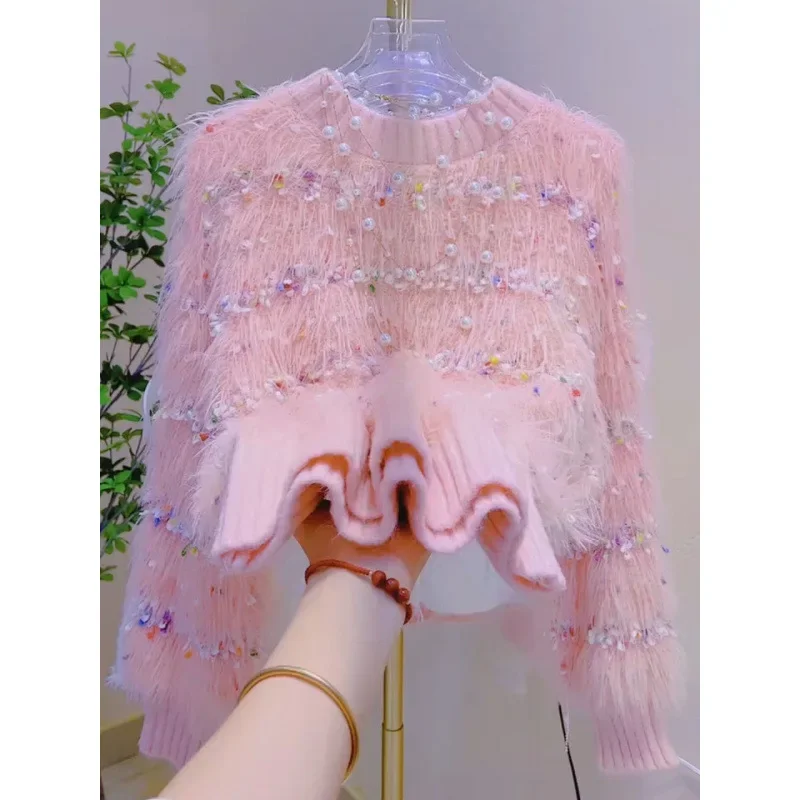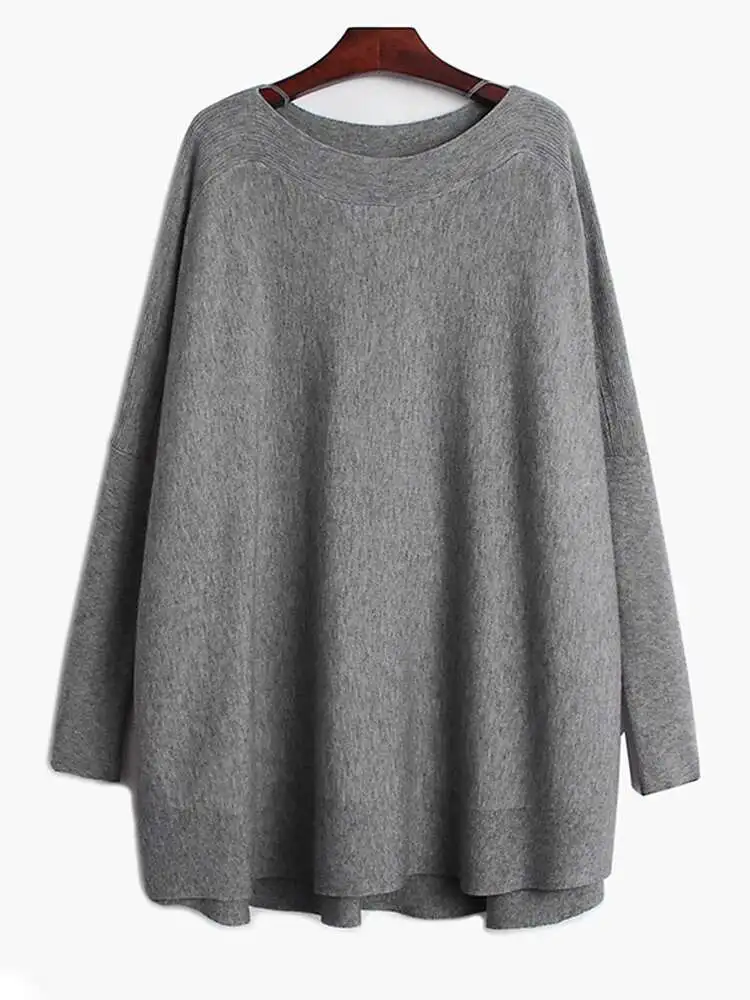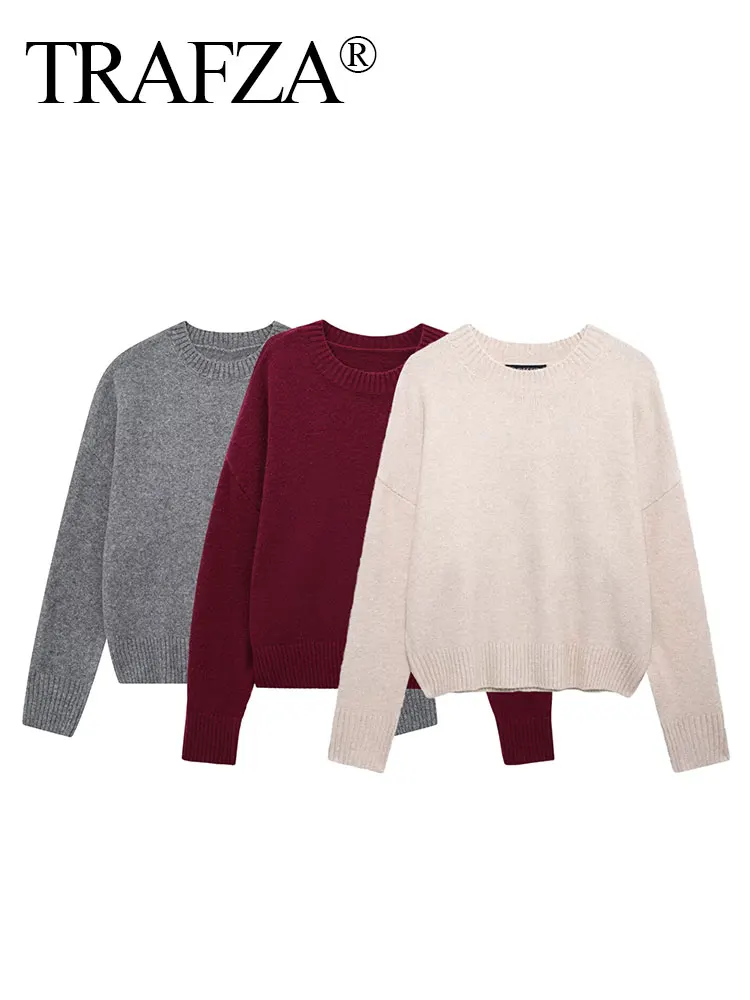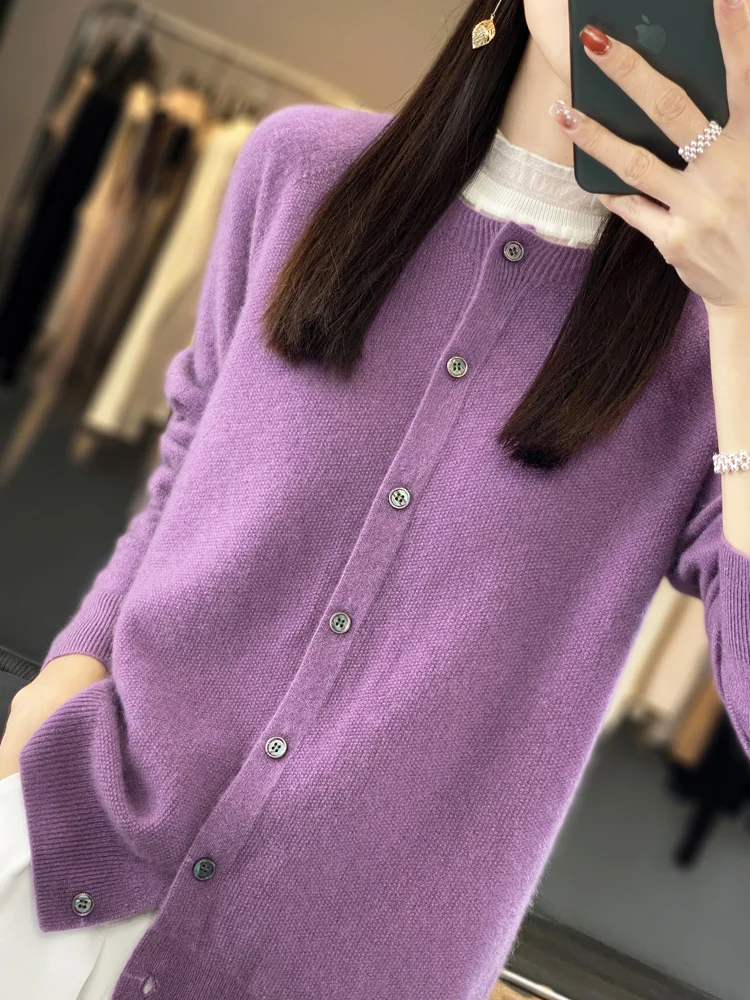Introduction: The Allure and Impact of Cashmere in Today’s Conscious Market
Cashmere has long captivated fashion enthusiasts and luxury seekers with its unparalleled softness, exceptional warmth, and timeless elegance. For centuries, this precious fiber has symbolized the pinnacle of textile luxury, adorning everything from royal garments to modern cashmere sweaters cherished for their comfort and sophistication.
Yet beneath this cloud of luxury lies a growing concern. Traditional cashmere production has come under scrutiny for its environmental footprint and ethical implications. As consumer awareness rises, so does the demand for sustainable alternatives that preserve cashmere’s luxurious qualities while respecting our planet and its inhabitants.
The challenges facing the cashmere industry are substantial. From grassland degradation in Mongolia and China to questions about animal welfare and fair labor practices, conventional cashmere production raises several issues that conscious consumers can no longer ignore.
What makes cashmere so precious is its scarcity—each cashmere goat produces only 150-200 grams (5-7 ounces) of dehaired cashmere annually, barely enough for a single sweater. This limited supply, combined with growing global demand, has intensified production pressures, often at the expense of sustainable practices.
This guide aims to navigate the complex landscape of eco-friendly cashmere choices, helping you make informed decisions that align with both your style preferences and values. We’ll explore sustainable alternatives, ethical sourcing practices, and how to identify truly responsible cashmere products in a market where “green” claims aren’t always what they seem.
The Environmental and Ethical Challenges of Conventional Cashmere
Ecological Impact
The environmental footprint of conventional cashmere begins with its source: the cashmere goat. In regions like Mongolia and China, which produce about 90% of the world’s cashmere, overgrazing has become a critical issue. Unlike sheep, cashmere goats have sharp hooves and eating habits that uproot vegetation rather than merely trimming it.
This grazing behavior, when poorly managed, leads to widespread desertification. Approximately 70% of Mongolia’s grasslands now show signs of degradation, directly impacting the delicate ecosystem balance. Native wildlife populations decline as their habitats disappear, while dust storms increase in frequency and intensity.
Resource Intensive Processing
Once harvested, conventional cashmere undergoes processing that demands significant resources. The cleaning, sorting, and preparation of raw cashmere requires vast amounts of water—processing just one pound (0.45 kg) of cashmere can consume hundreds of gallons of water.
Traditional dyeing methods compound this issue, often employing harsh chemicals that pollute local water systems when improperly managed. The energy requirements for processing and transportation further add to cashmere’s carbon footprint, creating a luxury product with hidden environmental costs that many styling cashmere cardigan versatile looks guides rarely mention.
Animal Welfare Concerns
The welfare of cashmere goats raises additional ethical questions. While the harvesting of cashmere—collecting the soft undercoat goats naturally shed in spring—isn’t inherently harmful, the methods can vary dramatically.
Traditional hand-combing, when done with care, causes minimal distress. However, as demand increases, some producers resort to mechanical harvesting or shearing, which can stress the animals if performed too early in the season when temperatures remain cold. These goats rely on their coats for protection against harsh mountain climates, making premature removal potentially dangerous.
Social and Economic Challenges
Behind every cashmere garment are the herding communities that have maintained traditional practices for generations. These communities often face economic pressures that push them toward unsustainable herd sizes and practices.
As climate change and market demands intensify, traditional herders may receive inadequate compensation for their labor and resources, creating a cycle where environmental degradation seems like the only path to economic survival. This disrupts not only ecosystems but cultural heritage and sustainable livelihood patterns that have existed for centuries.
What Makes Cashmere Truly Eco-Friendly? Key Principles
True eco-friendly cashmere represents a holistic approach to luxury that considers the entire lifecycle of a garment—from the welfare of the animals and land to the working conditions of producers and the longevity of the finished product. It’s about finding balance between creating beautiful, high-quality pieces while ensuring responsible stewardship of resources.
Core principles of eco-friendly cashmere include:
- Responsible animal husbandry: Ethical treatment of cashmere goats, including humane combing or shearing practices, adequate nutrition, and appropriate shelter
- Land stewardship: Sustainable grazing management that prevents overgrazing and promotes grassland health through rotation and herd size limitations
- Ethical labor practices: Fair compensation and safe working conditions for herders and textile workers throughout the supply chain
- Resource efficiency: Minimized water and energy consumption during processing, with proper treatment of any wastewater
- Chemical reduction: Limited use of harmful dyes, bleaches, and treatments, with preference for natural or low-impact alternatives
- Transparency: Clear communication about sourcing, production methods, and supply chain practices
- Circular approaches: Design for longevity, repairability, and eventual recyclability or biodegradability
When considering stylish ways to wear cashmere cardigans, these principles translate into practical differences in how garments are produced. For example, regenerative grazing practices might involve moving herds frequently to mimic natural grazing patterns, allowing vegetation to recover and actually improving soil health through managed impact.
The contrast between conventional and sustainable approaches is striking:
| Aspect | Conventional Approach | Sustainable Approach |
|---|---|---|
| Grazing | Static, high-density herds | Rotational grazing, appropriate herd sizes |
| Harvesting | Potentially stressful mechanical methods | Hand-combing during natural shedding season |
| Processing | Heavy water and chemical usage | Water recycling, low-impact or natural treatments |
| Labor | Often opaque supply chains, variable standards | Fair wages, safe conditions, community investment |
| Lifecycle | Designed for seasonal fashion cycles | Created for durability and timeless style |
These principles serve as benchmarks against which to evaluate the various sustainable cashmere options we’ll explore next.

Recycled Cashmere: A Circular Economy Solution
Recycled cashmere represents one of the most promising innovations in sustainable luxury textiles. This approach transforms existing cashmere garments and manufacturing scraps into new fibers, significantly reducing the environmental footprint associated with virgin cashmere production.
What recycled cashmere is
Recycled cashmere comes from two primary sources: post-consumer waste (used garments) and post-industrial waste (manufacturing scraps and unsold inventory). Though the concept isn’t new—textile recycling has existed for centuries—modern technology has refined the process to maintain much of cashmere’s prized qualities while dramatically lowering its environmental impact.
The recycling process
The journey from old sweater to new luxury item involves several carefully managed steps:
- Collection and sorting: Garments are gathered through collection programs or textile recyclers, then sorted by color and fiber content
- Cleaning and disinfection: Items undergo thorough sanitization without excessive chemical treatments
- Mechanical processing: Machines break down the fabrics into fibers through a process called garnetting
- Color sorting: Fibers are separated by color to minimize or eliminate the need for re-dyeing
- Blending: The recycled fibers are often blended with other fibers for strength and consistency
- Spinning and production: The resulting mixture is spun into new yarn and crafted into finished products
When wearing long cashmere cardigans, many fashion enthusiasts might not realize their garment could be made from recycled materials, as the quality can be remarkably high. Similarly, cashmere wool cardigans frequently incorporate recycled fibers to enhance sustainability while maintaining luxurious feel.
Environmental benefits
The advantages of recycled cashmere are substantial:
- Water conservation: Recycled cashmere uses approximately 80-87% less water than virgin production
- Energy reduction: The process requires significantly less energy, primarily by eliminating farming and initial processing steps
- Carbon footprint decrease: Studies show recycled cashmere produces about 92% less carbon dioxide than conventional methods
- Waste diversion: Keeps valuable textiles out of landfills where they would otherwise take decades to decompose
Quality considerations
While recycled cashmere offers impressive environmental benefits, consumers should understand how it differs from virgin fiber:
- Fiber length: The mechanical recycling process typically results in shorter fibers than virgin cashmere, which may affect long-term durability
- Blending necessity: Pure recycled cashmere can be more prone to pilling, so it’s often blended with other fibers (wool, nylon, or virgin cashmere) for strength
- Texture variation: Recycled cashmere may have a slightly different feel, though many brands have perfected techniques to maintain exceptional softness
- Performance trade-offs: While perhaps not quite as durable as virgin cashmere, properly cared for recycled cashmere still offers years of wear
Responsibly Sourced Virgin Cashmere: Ethical New Production
While recycled options offer significant environmental advantages, responsibly produced virgin cashmere remains an important part of the sustainable luxury landscape. This approach focuses on minimizing impact through careful management of every production stage.
Sustainable herding practices
Ethical cashmere production begins with proper land management:
- Rotational grazing systems: Moving herds strategically to prevent overgrazing and allow vegetation recovery
- Appropriate herd sizes: Maintaining numbers that the land can sustainably support
- Land regeneration initiatives: Active restoration of degraded grasslands through native planting and controlled grazing
- Climate adaptation strategies: Working with herders to develop resilience against changing weather patterns
These practices support the ecosystem while providing lightweight cashmere cardigans and other products that conscious consumers can feel good about purchasing.
Animal welfare standards
Ethical cashmere prioritizes humane treatment of the goats:
- Hand-combing: Collecting fiber during natural spring molting using gentle, traditional methods
- Proper timing: Harvesting only when appropriate for climate conditions, ensuring animals don’t suffer exposure
- Adequate nutrition: Ensuring access to sufficient food and water throughout the year
- Veterinary care: Regular health monitoring and intervention when needed
- Protection from predators: Appropriate safeguards without harming local wildlife

Community support and fair trade
Truly sustainable cashmere honors the human element of production:
- Fair compensation: Paying herders living wages that reflect the true value of this luxury resource
- Traditional knowledge preservation: Respecting and maintaining indigenous herding techniques that have proven sustainable over centuries
- Education and healthcare: Investing in community infrastructure and services
- Producer ownership: Supporting cooperatives and other models where herders have agency and equity in the value chain
These social considerations are fundamental to cashmere turtlenecks and other products that claim ethical sourcing credentials.
Sustainable processing
After ethical harvesting, responsible manufacturers employ techniques to minimize environmental impact:
- Water recycling systems: Capturing and treating process water for reuse
- Low-impact dyeing: Using natural dyes or certified low-impact synthetic options
- Energy efficiency: Employing renewable energy sources and optimized equipment
- Waste management: Properly treating all byproducts and minimizing material waste
Organic and Naturally Colored Cashmere: Minimizing Chemical Impact
Organic cashmere takes sustainable production a step further by eliminating synthetic chemicals throughout the process. While not as widely available as other sustainable options, this approach offers distinct environmental and health advantages.
Defining organic cashmere
For cashmere to be considered truly organic, several criteria must be met:
- The grazing lands must be certified organic, meaning no synthetic pesticides, fertilizers, or GMO plants are used
- Goats must be raised according to organic livestock standards, including natural feed and limited medical interventions
- Processing must avoid synthetic chemicals in cleaning, dyeing, and finishing
- Regular certification inspections ensure compliance with established organic standards
These stringent requirements make organic cashmere particularly appealing for cashmere cardigan investments that prioritize purity and minimal environmental impact.
Naturally colored cashmere
One of the most environmentally friendly approaches to cashmere production utilizes the natural colors of the goats’ fiber:
| Natural Color | Characteristics | Availability |
|---|---|---|
| White | Purest shade, most versatile for dyeing if desired | Common |
| Cream/Beige | Soft neutral tones with subtle variation | Common |
| Light Brown | Warm caramel to fawn coloration | Moderate |
| Dark Brown | Rich chocolate tones | Less common |
| Gray | From light silver to charcoal | Less common |
By using these natural colors without dyeing, manufacturers eliminate:
- Water consumption for dye baths (approximately 1,800 gallons/6,800 liters per pound of conventionally dyed cashmere)
- Chemical inputs from synthetic dyes and fixatives
- Wastewater treatment requirements and potential pollution
Environmental advantages
The benefits of organic and naturally colored cashmere include:
- Reduced water pollution: No synthetic agricultural chemicals or dyes entering waterways
- Healthier soil: Organic grazing lands typically have better soil structure and carbon sequestration potential
- Biodiversity support: Chemical-free environments support more diverse plant and animal communities
- Potential health benefits: People with chemical sensitivities or skin allergies may experience fewer reactions
Market considerations
While offering significant environmental advantages, these options do have market limitations:
- The naturally available color palette is more limited than dyed options
- Certification processes for organic status increase production costs
- Availability may be more limited than conventional or recycled cashmere
- Price points typically reflect the specialized production methods and limited supply
Cashmere Blends and Alternatives: Expanding Sustainable Options
Blending cashmere with other sustainable fibers creates additional options for eco-conscious consumers. These thoughtful combinations can enhance performance, improve accessibility, and further reduce environmental impact.
Purpose of sustainable cashmere blends
Blending serves several important sustainability functions:
- Extends limited cashmere resources by combining with more abundant fibers
- Improves durability, potentially extending garment lifespan
- Creates different price points, making sustainable options more accessible
- Allows for specialized performance characteristics
These benefits make blended products excellent options when layering cashmere cardigans for year-round wear, while brushed cashmere sweaters might use strategic blending to enhance their characteristic loft and softness.
Common ethical blend components
Responsible cashmere blends often incorporate:
- Recycled wool: Adds structure and durability while utilizing post-consumer materials
- Organic cotton: Provides breathability and reduces cost while maintaining softness
- Responsible wool: Certified ethical wool adds warmth and resilience
- Recycled polyester: Improves strength and reduces pilling while diverting plastic from landfills
- Innovative natural fibers: Materials like hemp, linen, or alpaca add unique properties and diversify environmental impact

Performance characteristics
Different blends create distinct performance profiles:
| Blend Type | Durability | Warmth | Softness | Best Uses |
|---|---|---|---|---|
| Cashmere-Recycled Wool | Excellent | High | Good | Outerwear, structured pieces |
| Cashmere-Organic Cotton | Good | Moderate | Very Good | Year-round, versatile pieces |
| Cashmere-Recycled Polyester | Very Good | Good | Good | Active lifestyles, travel |
| Cashmere-Silk | Moderate | Moderate | Excellent | Lightweight luxury, dressy items |
Evaluating environmental trade-offs
When considering blends, it’s important to assess their full environmental picture:
- Some blends (like cashmere-synthetic mixes) may be less biodegradable but offer significantly longer wear life
- Certain combinations may be more easily recycled at end-of-life than pure cashmere
- Transportation impact may be reduced when incorporating locally-sourced secondary fibers
- Manufacturing efficiencies may result in lower overall resource consumption per garment
Cashmere Wrap Sweaters, Women's Cashmere Pullovers
$75.89 Select options This product has multiple variants. The options may be chosen on the product pageCashmere Cable Knit Sweaters, Women's Cashmere Pullovers
Price range: $111.82 through $112.93 Select options This product has multiple variants. The options may be chosen on the product pageCropped Cashmere Sweaters, Women's Cashmere Pullovers
$155.77 Select options This product has multiple variants. The options may be chosen on the product pageOversized Cashmere Sweaters, Plus Size Cashmere Sweaters, Women's V-Neck Cashmere Sweaters
$136.87 Select options This product has multiple variants. The options may be chosen on the product page- Price range: $108.11 through $130.03 Select options This product has multiple variants. The options may be chosen on the product page
Striped Cashmere Sweaters, Women's Cashmere Pullovers
$139.68 Select options This product has multiple variants. The options may be chosen on the product page
Essential Certifications and Standards for Eco-Friendly Cashmere
In a market filled with sustainability claims, third-party certifications provide crucial verification. Understanding these standards helps consumers make informed choices about the environmental and ethical impact of their cashmere purchases.
Animal welfare and environmental certifications
- The Good Cashmere Standard® (GCS)
- Focuses specifically on cashmere goat welfare
- Includes land management practices and herder working conditions
Requires traceability from farm to finished product
Sustainable Fibre Alliance (SFA)
- Promotes sustainable production of cashmere
- Addresses animal welfare, land management, and fair labor
Works directly with herding communities in Mongolia
Responsible Wool Standard (RWS)
- While primarily for wool, also covers some cashmere
- Comprehensive approach to animal welfare and land management
Requires chain of custody certification throughout supply chain
Textile Exchange standards
- Develops various fiber-specific sustainability standards
- Focuses on reducing harmful impacts of textile production
- Offers benchmarking tools for brands and manufacturers
These certifications are particularly relevant when shopping for casual cashmere cardigans that claim ethical sourcing credentials.
Processing and chemical standards
- Global Organic Textile Standard (GOTS)
- Covers organic status from harvesting through manufacturing
- Restricts chemicals in processing
Includes social criteria for workers
OEKO-TEX® Standard 100
- Certifies products are free from harmful substances
- Tests for regulated and non-regulated chemicals
Different certification levels based on skin contact
Bluesign® system
- Focuses on eliminating harmful substances from the beginning
- Monitors environmental health and safety throughout production
- Ensures resources are used responsibly
Recycled material certifications
- Global Recycled Standard (GRS)
- Tracks and verifies recycled content in products
- Includes social and environmental processing requirements
Requires chain of custody documentation
Recycled Claim Standard (RCS)
- Simpler standard focusing solely on recycled content verification
- Tracks material from recycler to final product
- Provides transparent communication about recycled percentages
These standards are especially important for oversized cashmere sweaters and other products claiming recycled content.
Social responsibility certifications
- Fair Trade Certified™
- Ensures fair compensation and working conditions
- Includes community development premiums
Prohibits forced labor and child labor
SA8000® Standard
- Focuses on worker rights and conditions
- Based on UN and ILO conventions
- Requires management systems for ongoing compliance
How to identify genuine certifications
To ensure certifications are legitimate:
- Look for certification logos with identification numbers
- Verify claims through certification organization websites
- Be wary of vague claims without specific certification details
- Understand that some certifications only cover specific aspects of production
How to Identify and Shop for Authentic Eco-Friendly Cashmere
Making informed decisions about sustainable cashmere requires careful evaluation beyond marketing claims. These practical strategies will help you identify genuinely eco-friendly options that align with your values.
Research brand commitment to sustainability
Before purchasing, investigate the brand’s approach to sustainability:
- Look for detailed information about sourcing and production methods
- Check for supply chain transparency—can they trace their cashmere back to specific regions or communities?
- Review their overall sustainability commitments, not just cashmere-specific claims
- Evaluate whether sustainability seems core to their business or merely a marketing angle
These considerations apply whether you’re looking for versatile outfit ideas with cashmere cardigans or basic staples.
Ask the right questions
When information isn’t readily available, don’t hesitate to inquire about:
- The specific origin of the cashmere fibers
- How animal welfare is monitored and ensured
- What processing methods are used, particularly regarding water and chemicals
- Which certifications apply to the specific product (not just the company)
- How they support herding communities and ensure fair compensation
- Whether they have a repair or recycling program for end-of-life garments

Evaluate physical quality indicators
High-quality sustainable cashmere typically shows these characteristics:
- Even, tight knitting with consistent tension
- Minimal initial pilling (though all cashmere pills to some extent)
- Soft but substantial feel (extremely lightweight cashmere may lack durability)
- Clear labeling with fiber content percentages and care instructions
- Neat finishing and attention to construction details
These quality markers are especially important when investing in men’s cashmere pullovers or other core wardrobe pieces expected to last for years.
Understanding price factors
Price often reflects sustainability credentials:
- Truly sustainable cashmere typically costs more than conventional options
- Ethical sourcing ensures herders receive fair compensation
- Certification processes add costs but provide valuable verification
- Investment pieces may offer better value over time through extended wear life
- Consider cost-per-wear rather than just initial purchase price
Red flags to watch for
Be cautious when you encounter:
- Unusually low prices for “pure” or “sustainable” cashmere
- Vague claims about being “natural” or “eco-friendly” without specifics
- Missing information about country of origin or production methods
- Resistance to answering direct questions about sourcing or certification
- Dramatic discounts that suggest inflated original pricing
Leading Brands Offering Sustainable Cashmere Solutions
As demand for ethical cashmere grows, innovative brands are pioneering different approaches to sustainable luxury. These companies represent various paths to more responsible cashmere production.
Pioneers in recycled cashmere
Several brands have made recycled cashmere central to their sustainability strategy:
- Companies that collect post-consumer cashmere for reprocessing into new garments
- Brands utilizing cutting-room waste and production scraps to create zero-waste systems
- Designers specializing in techniques that maximize the unique characteristics of recycled fibers
- Businesses developing innovative blends to enhance the performance of recycled cashmere
These innovations appear across product ranges, including diverse cashmere cardigan styles designed to maximize versatility and longevity.
Ethical virgin cashmere specialists
Some brands focus on transforming traditional cashmere production:
- Companies working directly with nomadic herding communities to preserve traditional practices
- Brands implementing regenerative grazing programs that restore grasslands
- Businesses establishing transparent supply chains from goat to garment
- Organizations reinvesting profits into herder education and sustainable agriculture
Organic and natural cashmere brands
A smaller segment specializes in chemical-free approaches:
- Producers using only certified organic grazing lands and processing
- Brands specializing in undyed cashmere that showcases natural fiber colors
- Companies employing natural dyeing techniques using plant-based materials
- Businesses focusing on minimal processing to preserve cashmere’s natural characteristics
Innovative blend creators
Forward-thinking brands are developing thoughtful fiber combinations:
- Companies creating performance-enhanced sustainable blends for specific uses
- Designers working with unusual fiber combinations to create unique textures and properties
- Brands focusing on accessible price points through strategic blending
- Businesses specializing in technical innovations that improve durability and reduce environmental impact
These brands offer excellent options for women’s cashmere pullovers and other wardrobe essentials that combine sustainability with luxury.
Caring for Your Cashmere: Maximizing Longevity for Ultimate Sustainability
Perhaps the most sustainable approach to cashmere is extending the life of pieces you already own. Proper care dramatically increases longevity, reducing the need for replacement and maximizing your investment.
Proper washing techniques
Gentle cleaning preserves cashmere’s quality:
- Hand wash using lukewarm water and mild detergent specifically formulated for wool/cashmere
- Soak for 10-15 minutes without rubbing or wringing
- If machine washing is necessary, use a mesh bag, wool cycle, and cold water
- Rinse thoroughly but gently until water runs clear
- Wash only when necessary—often airing between wears is sufficient
For detailed guidance, our cashmere care washing guide provides comprehensive instructions.
Drying and storage methods
Proper handling after washing prevents damage:
- Press (don’t wring) to remove excess water
- Reshape while damp and dry flat on a clean towel
- Keep away from direct heat sources and sunlight
- Store folded in breathable containers, never hanging
- Use cedar blocks or lavender sachets as natural moth deterrents
- Ensure cashmere is completely clean and dry before seasonal storage

Maintenance and repair
Regular attention prevents minor issues from becoming irreparable:
- Remove pills gently using a cashmere comb or small fabric shaver
- Address small holes immediately using matching thread or professional repair
- Reinforce areas showing wear before they develop holes
- Consider professional reconditioning for treasured pieces showing age
- Store with care to prevent moth damage
Extending wearability
Strategic practices maximize each garment’s useful life:
- Wear light layers underneath to reduce direct skin contact and frequency of washing
- Air garments for 24 hours after wearing before returning to storage
- Spot clean small marks instead of washing the entire garment
- Learn basic darning techniques for minor repairs
- Consider repurposing beyond-repair items into other products
The Future of Sustainable Cashmere: Innovations and Industry Trends
The cashmere industry continues to evolve, with promising developments that could further reduce environmental impact while preserving this luxury fiber’s desirable qualities.
Emerging technologies in production
Innovation is transforming traditional practices:
- Advanced fiber recovery systems that can process smaller scraps more efficiently
- Water-free or minimal-water cleaning processes using biodegradable solutions
- Natural enzyme treatments that replace harsh chemicals in processing
- Digital printing and dyeing techniques that drastically reduce water consumption
- Compostable packaging solutions specifically designed for luxury garments
Traceability innovations
New technologies are improving supply chain transparency:
- Blockchain systems that track cashmere from specific herds through the entire production process
- DNA testing that can verify cashmere origin and purity claims
- QR codes linking consumers to specific information about their garment’s journey
- Digital passports for garments that document repair history and end-of-life options
Industry collaboration initiatives
Collective action is addressing systemic challenges:
- Cross-sector programs focused on grassland restoration and management
- Industry-wide standards for ethical cashmere that streamline verification
- Cooperative investments in community development for herding regions
- Research partnerships developing more sustainable production methods
Consumer education and engagement
Informed consumers are driving meaningful change:
- Growing awareness about the true environmental costs of fast fashion
- Increased demand for transparent information about production methods
- Consumer preference for quality over quantity, supporting investment pieces
- Community building around repair, care, and garment longevity
Frequently Asked Questions About Eco-Friendly Cashmere
Quality comparisons
Is recycled cashmere as soft as virgin cashmere?
Recycled cashmere can be remarkably soft, though it may have a slightly different feel than virgin fiber. The mechanical recycling process typically results in shorter fibers, but professional processing techniques can create a product that many find indistinguishable from conventional cashmere.
Does sustainable cashmere pill less than conventional options?
All cashmere pills to some degree, but higher-quality sustainable cashmere often pills less due to careful fiber selection and processing. Recycled cashmere may pill more initially but stabilizes after the first few wears and washes.
How long should quality eco-friendly cashmere last?
With proper care, high-quality sustainable cashmere should last 10+ years. Estate Cloth’s premium cashmere pieces are designed for this extended lifespan, with construction details specifically chosen for longevity.
Value considerations
Why does sustainable cashmere often cost more?
Sustainable cashmere reflects the true cost of ethical production, including fair compensation for herders, environmental protections, certification processes, and often smaller-scale production methods. The investment typically pays off in superior quality and longevity.
Is the investment in eco-friendly cashmere worth it?
For most people, yes. Beyond the environmental benefits, sustainable cashmere often offers superior quality, better durability, and timeless design that resists trend cycles, resulting in better cost-per-wear over time.
How can I find more affordable sustainable cashmere options?
Consider recycled cashmere or thoughtful blends, which often come at lower price points. Also look for simpler designs, end-of-season sales from ethical brands, and investment in versatile pieces that maximize wear opportunities.
Verification concerns
How can I verify if cashmere is truly ethically sourced?
Look for specific certifications rather than vague claims, research the brand’s supply chain transparency, and don’t hesitate to ask direct questions about sourcing regions, herder relationships, and animal welfare practices.
Which certifications are most important for cashmere?
The Good Cashmere Standard and Sustainable Fibre Alliance certifications specifically address cashmere production. For recycled content, look for the Global Recycled Standard or Recycled Claim Standard.
How can I spot greenwashing in cashmere marketing?
Be wary of vague terms like “natural” or “eco-friendly” without specific details. Authentic sustainable brands typically provide transparent information about their practices, challenges, and ongoing improvement efforts rather than perfect-sounding but unsubstantiated claims.
Care questions
Can I wash eco-friendly cashmere at home?
Yes, most sustainable cashmere can be carefully hand-washed at home using appropriate techniques and mild detergents. Always follow the specific care instructions for your garment.
How often should sustainable cashmere be washed?
Infrequently—typically after 5-10 wears, depending on use. Airing between wears often refreshes garments sufficiently without full washing.
What’s the best way to store cashmere between seasons?
Clean thoroughly before storage, fold (never hang) in breathable containers with cedar or lavender as natural moth deterrents, and store in a cool, dry place away from direct sunlight.
By choosing truly sustainable cashmere and caring for it properly, you can enjoy this luxurious fiber while supporting environmental and ethical practices that preserve its future. Estate Cloth remains committed to offering premium cashmere pieces that combine exceptional quality with responsible production, ensuring that luxury and sustainability work in harmony.







